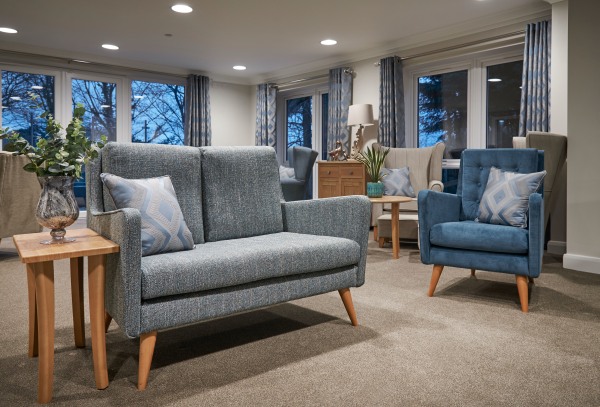How to Improve Mental Health Through Care Home Design
- Creating a Homely Environment: Designing care homes to feel like home, with familiar furnishings and personal touches, helps residents feel comfortable and relaxed, positively impacting their mental health. Maximizing natural light and providing access to outdoor spaces further enhances mood and well-being.
- Minimizing Overstimulation: Soft colors, soothing textures, and sound-absorbing materials reduce sensory overload, creating a calming atmosphere and benefiting residents with cognitive impairments or sensory sensitivities.
- Fostering Social Interaction: Designing communal spaces and dining areas encourages residents to engage in activities and interact with each other, combating social isolation and promoting mental well-being.
- Promoting Independence: Prioritizing clear signage, wheelchair accessibility, and well-defined pathways enables residents to navigate their surroundings independently, enhancing their sense of autonomy and reducing anxiety.
- Incorporating Therapeutic Elements: Incorporating natural scents, aromatherapy, soothing music, and tactile elements provides residents with therapeutic sensory experiences, contributing to relaxation and improved mental health.
As our population continues to age, the need for high-quality care homes is on the rise. Building design choices play a crucial role in shaping the environment in which care home residents live, and these choices can have a significant impact on their mental health. In this article, we will explore how thoughtful design choices can improve the mental health of care home residents.

Creating a sense of home within a care home
The first step in improving mental health through design is to create an environment that feels like home. This involves moving away from the sterile, institutional feel of traditional care homes and embracing a more homely atmosphere. Residents should feel comfortable, safe and relaxed in their living space.
Allowing residents to personalise their rooms with familiar items such as family photos, artwork and personal mementos can help create a sense of familiarity and comfort. As well as this, maximising natural light in common areas and bedrooms can help regulate sleep patterns and improve mood. Exposure to natural light has been shown to reduce symptoms of depression and anxiety, so this is particularly important.
Designing care homes with access to gardens or outdoor spaces provides residents with opportunities for fresh air, nature and social interaction, which can have a very positive impact on mental wellbeing.

How to reduce overstimulation in a care home
Care home residents may have cognitive impairments or sensory sensitivities that make them vulnerable to overstimulation. Design choices can help minimise overstimulation and create a calming atmosphere.
For example, using soft colours, soothing textures and gentle patterns in interior design can reduce sensory overload and create a calming atmosphere. For sound-sensitive residents, implementing sound-absorbing materials and layouts that reduce noise can create a quieter and more peaceful environment, especially in common areas where things can get busy.
How to support social interaction in a care home
Social isolation is a significant concern in care homes as it can negatively affect residents’ mental health. However, design can play a role in fostering social interaction. Think about creating communal spaces and dining areas that encourage residents to gather, engage in activities and interact with each other, as this can help combat loneliness and depression.
How to promote independence within a care home
Maintaining a sense of independence is essential for residents’ mental wellbeing. Design choices should prioritise residents’ ability to navigate their surroundings and perform daily tasks. Clear signage, well-defined pathways and easily navigable layouts can help residents move around independently, reducing frustration and anxiety. You also want to ensure that spaces are wheelchair accessible and equipped with assistive devices as needed.
Incorporating therapeutic design elements
Certain design elements can have therapeutic benefits for care home residents, which can ultimately improve their mental health. Incorporating natural scents and aromatherapy in common areas can have a calming effect and promote relaxation, and features like soothing music, soft lighting and tactile elements can provide residents with therapeutic sensory experiences.
Here at Aedifice Partnership, we manage new care home construction projects across the UK. If you have a question for our team about care home design or you would like to enquire about our services, all you have to do is give us a call.



